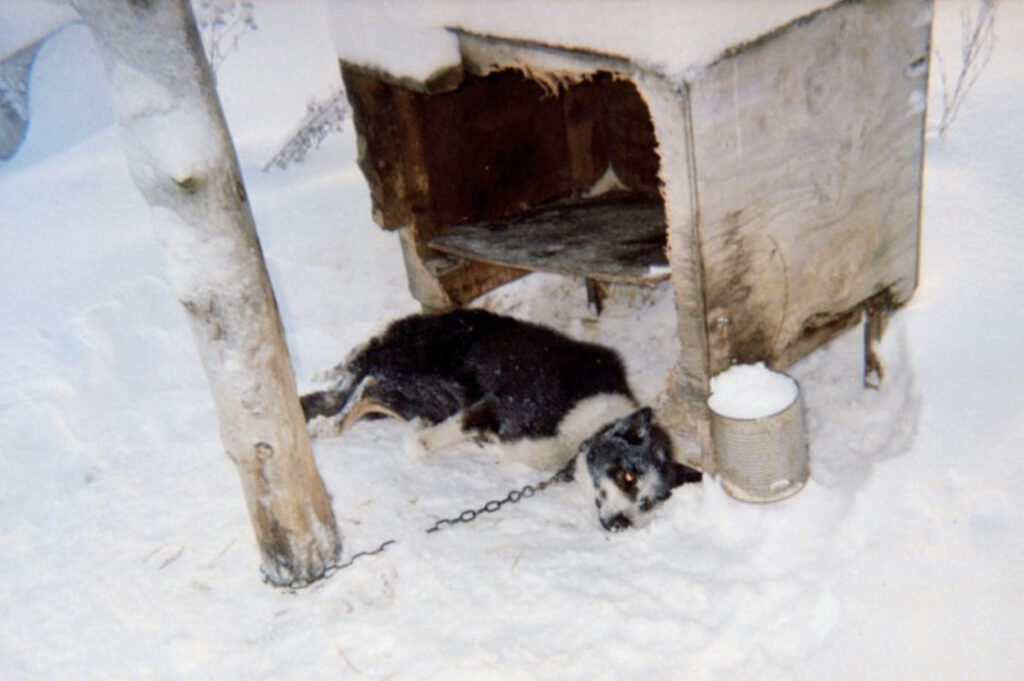Podcast: Play in new window | Download
Subscribe: RSS
Lori begins with an update on the situation in Ukraine and the war region with Robert Misseri, founder and President of Paws of War. The situation Robert describes is very fraught, with starving and terrified animals roaming and hiding, worsened by severe hindrances to relief efforts due to the ever-present danger. Sometimes, dumping bags of dog food onto the ground for the dogs is all that relief workers can do.
Then, the Iditarod Trail Sled Dog Race has just marked its 50th anniversary. Yes, it continues despite strong efforts by many groups and individuals to shut down this profoundly cruel yearly event. The contest is a 1100 mile long race from Anchorage to Nome, Alaska. The teams racing in the Iditarod consist of one human driver of the sled (musher) and 12-16 dogs who are connected to the sled by a series of lines. These dogs are forced to run beyond exhaustion over 8-16 days on grueling terrain, with jagged rocks, high winds, dense forest and subzero temperatures. They can develop lung and kidney damage, stomach ulcers, hypothermia, frostbite, bone fractures, shoulder injuries and often sustain tendon tears. Dogs can get injured or killed by getting tangled in the lines. This year, conditions were especially stormy and cold. According to PETA, two dogs went missing, and nearly 250 were pulled off the trail due to exhaustion, illness or injury. Before the race even started, dogs were attacked and one was killed during training. Also, the Anchorage Daily News reported that 3 mushers were penalized for the rule-breaking act of allowing dogs to escape the brutal story and cold conditions by allowing them to spend the night in their shelters. Lori recommends the 2016 film, “Sled Dogs” for a behind the scenes look at this cruel race including the culture and businesses that sustain it. Also, visit Sled Dog Action Coalition for extensive information about the race and its cruelty. Due to the widespread criticism of the event, corporate sponsorship is decreasing. Let’s hope this portends the end of this very cruel event.
Lori then continues sharing some amazing physical adaptations possessed by some creatures including the Alaskan wood frog, which can freeze and thaw to survive the winter, the innocuous looking stonefish, which can kill with its highly potent venom, the extreme bite strength of the Tasmanian devil, the javelina, which happily ingests spine covered prickly pear cactus pads, and more




Leave a Reply